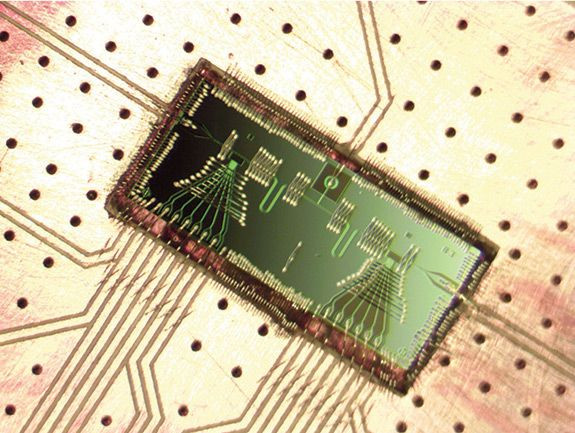Maser -- A Microwave Laser -- No Bigger Than A Grain Of Rice Created At Princeton

Researchers say they have built a microwave laser no bigger than a grain of rice that is powered by single electrons tunneling through artificial atoms known as quantum dots. The device, called a maser, could help make advances in communications, sensing, medicine and other aspects of modern life.
The device uses about one-billionth of the power needed to run a hair dryer and represents a major step in efforts to build quantum-computing systems, the researchers said. "I consider this to be a really important result for our long-term goal, which is entanglement between quantum bits in semiconductor-based devices," Jacob Taylor, an adjunct assistant professor at the Joint Quantum Institute, University of Maryland-National Institute of Standards and Technology, said in a press release.
The researchers weren't trying to build a mini-maser. The experiment actually was designed to explore the use of double quantum dots, joining two dots together to form qubits, the basic units of information in quantum computers.
"The goal was to get the double quantum dots to communicate with each other," said Yinyu Liu, a physics graduate student involved in the research, which was published in the journal Science.
The researchers used extremely thin nanowires made of indium arsenide to fabricate the quantum dots. They placed the qubits 6 milimeters apart in a cavity made from niobium at a temperature near absolute zero (459 degrees below zero Fahrenheit).
"This is the first time that the team at Princeton has demonstrated that there is a connection between two double quantum dots separated by nearly a centimeter, a substantial distance," Taylor said. The electrons flowed single-file through each dot, which emitted photons in the microwave region of the light spectrum. The photons bounced off mirrors on either side of the cavity, creating a beam of microwave light.
The light produced can be fine-tuned to other frequencies, something semiconductor lasers cannot do, said Jason Petta, an associate professor of physics at Princeton and leader of the study.
Another team of researchers at National Physical Laboratory and Imperial College London announced it had constructed a solid-state maser that doesn't need the extremely low temperatures or pressures to function. The researchers said in a release they achieved the breakthrough by replacing the ruby usually used in making masers with p-terphenyl crystal treated with pentacene.
During the experiment, the normally clear alternative crystal turned reddish pink, so it looked like a ruby. The London research was funded by the Engineering and Physical Sciences Research Council and, the National Physical Laboratory through the U.K.'s National Measurement Office.
© Copyright IBTimes 2024. All rights reserved.






















